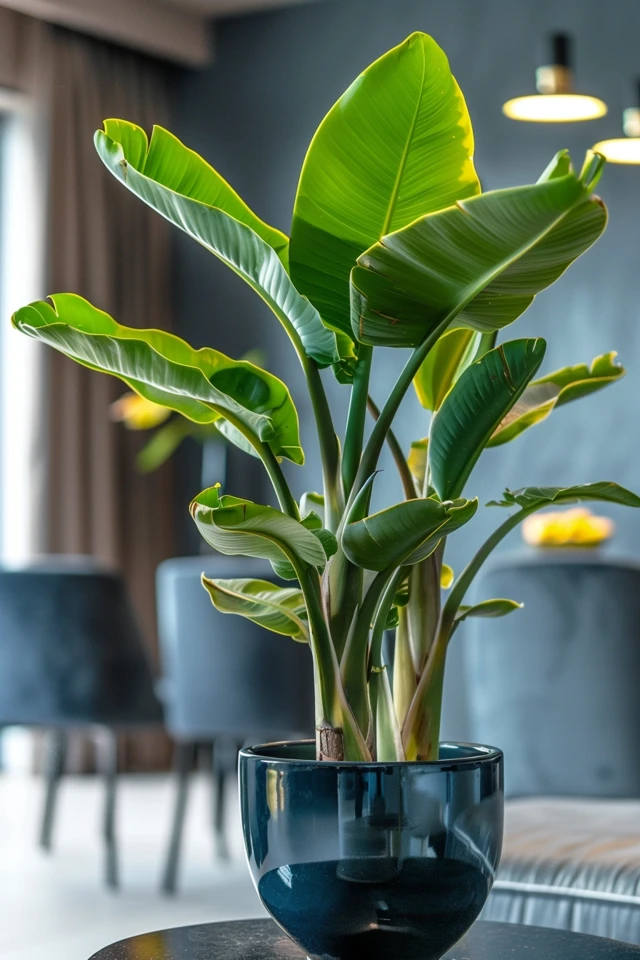Welcome to my guide on taking care of the String of Bananas plant, also known as Curio radicans or Senecio radicans. This trailing succulent is not only easy to care for but also adds a touch of greenery and uniqueness to your indoor space.
The String of Bananas features glossy, banana-shaped leaves that grow in long, trailing tendrils, making it a popular choice as a hanging houseplant. With its drought-tolerant nature and low-maintenance requirements, it’s perfect for both beginner and experienced succulent enthusiasts.
When it comes to String Of Bananas care, there are a few key factors to keep in mind. Let’s explore them in detail to ensure your succulent thrives and stays healthy for years to come.
Key Takeaways:
- String of Bananas is a trailing succulent with banana-shaped leaves.
- It is drought-tolerant and thrives in bright, indirect light.
- Allow the soil to dry completely before watering.
- String of Bananas prefers well-draining soil and can be propagated through stem cuttings.
- Protect the plant from cold drafts and temperatures below 50°F.
Light and Watering Requirements for String Of Bananas
The String of Bananas, also known as Curio radicans, is a stunning trailing succulent that adds a touch of natural beauty to any indoor space. To ensure the health and vitality of your String of Bananas, it is important to meet its specific light and watering requirements.
When it comes to lighting, the String of Bananas thrives in bright, direct light. It is recommended to place your plant in a location that receives at least six hours of sunlight throughout the day. If optimal light conditions aren’t available, you can also grow the String of Bananas under grow lights, ensuring it receives the necessary light intensity to flourish.
Watering is a crucial aspect of succulent care, and the String of Bananas has its own unique needs. To avoid overwatering and prevent root rot, it is essential to allow the soil to dry out completely between waterings. Remember, it is better to underwater than overwater your String of Bananas. These plants have low water requirements and are considered drought-tolerant, making them well-suited for even the most forgetful plant owners.

A recommended watering schedule for String of Bananas is to water deeply and then allow the soil to dry out before watering again. During the dormant winter phase, reduce the frequency of watering as the plant’s growth slows down. This will help mimic its natural growth cycle and prevent excess moisture in the soil.
String of Bananas thrives in well-draining soil to prevent waterlogged roots. It is recommended to use a soil mix consisting of 2 parts potting soil, 1 part perlite, and 1 part pumice or sand. This mixture ensures proper drainage while retaining enough moisture for the plant’s needs.
With the right balance of light and watering, your String of Bananas will flourish, displaying its unique trailing tendrils and vibrant, banana-shaped leaves. Remember to observe your plant and adapt its care routine based on its specific needs.
Temperature, Fertilizing, and Propagation Tips for String Of Bananas
The String of Bananas, also known as Curio radicans, thrives in average room temperatures ranging from 65°F to 80°F. To replicate its natural habitat in South Africa, it is crucial to provide a warm and dry environment for this succulent. Cold drafts and temperatures below 50°F should be avoided to protect the plant’s health.
When it comes to fertilizing, the String of Bananas doesn’t require regular feeding but can benefit from light fertilization during the spring or summer months. Opt for organic fertilizers like worm compost, liquid kelp, or fish emulsion, which provide the necessary nutrients without overwhelming the plant.

Propagation of the String of Bananas is relatively simple and can be done through stem cuttings. Take healthy stem cuttings and allow them to callous before planting them in well-draining soil. Be patient as the new plants may take up to a month to establish their roots.
Repotting is generally not frequent for the String of Bananas, but refreshing the soil by moving the plant to a larger pot every couple of years is recommended. Ensure the pot has proper drainage to prevent root rot, a common issue with succulents.
While String of Bananas succulents are resilient, they can be susceptible to common houseplant pests and diseases, such as aphids, mealybugs, scale insects, and spider mites. Regularly check the plant for signs of withering leaves, wrinkling, or leggy growth. Early detection and proper treatment can prevent any pest infestations and maintain the plant’s health.


